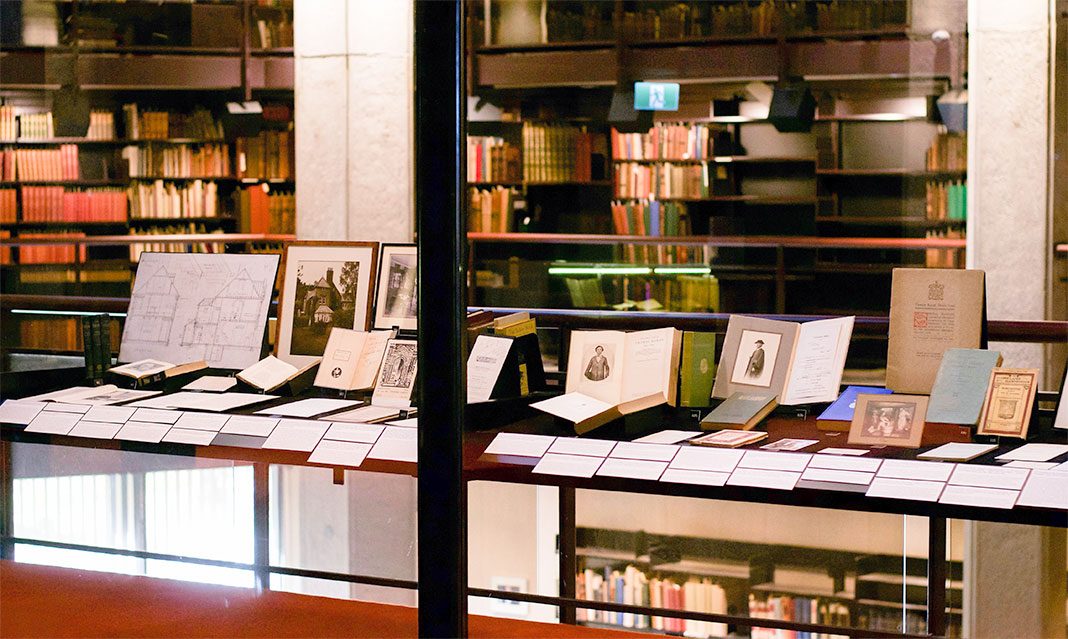The Thomas Fisher Rare Book Library is currently displaying ‘Moments of Vision’: The Life and Work of Thomas Hardy. Thomas Hardy (1840-1928) was an English author and poet during the mid to late 1800s. Michael Millgate, a Hardy scholar and U of T professor, donated the collection to the library. The collection includes Hardy’s manuscripts, first edition novels, autographs to fans and other authors, photos, and letters. The layout of the exhibition follows a timeline of Hardy’s life.
Hardy began his career as an architect. In 1867, Hardy attempted to publish his first novel, The Poor Man and the Lady. Several publishers rejected the manuscript. However, one named George Meredith believed in Hardy’s potential, and told him to keep working on his writing. Hardy published 14 novels, including A Pair of Blue Eyes, Far from the Madding Crowd, Tess of the d’Urbervilles and The Mayor of Casterbridge. The exhibition showcases many first editions of these novels, and some reprint editions with vibrant illustrations.
In addition to the books on display, there are also letters, photographs, and other artifacts that offer insight into Hardy’s personal life. A blueprint for Hardy’s estate, which he named Max Gate, is featured on display. Hardy designed the house himself. His brother, whose name is unknown, built it. Hardy moved into Max Gate with his wife, Emma Gifford, in 1885.
The exhibition also involves Hardy’s wives. Hardy married Gifford in 1870. Gifford’s death in 1912 inspired Hardy to publish Poetry 1912-13. Hardy married Florence Dugdale in 1914, who was 39 years younger than him. Both women had a deep appreciation for literature. Emma wrote diaries and her own autobiography, although it was never published. Dugdale was a writer of children’s stories, who published her first novel, The Book of Baby Birds, with Hardy’s help.
Hardy’s first commercially successful novel was Far from the Madding Crowd. It was originally published anonymously as a monthly installment in Cornhill Magazine. Far from the Madding Crowd is set in Wessex, a fictional town that appears throughout Hardy’s literature. The story follows farmer Bathsheba Everdene, including her relationships with men and her dealings with the harsh farming backdrop of Victorian England. Far from the Madding Crowd has been adapted into two movies and one play.
Although Hardy enjoyed writing literature, the rejection of his final two novels—critics deemed them obscene and distasteful—discouraged him from writing fiction in his later years. In place of prose, Hardy adopted poetry. In one autograph from Hardy to George Morley, an upcoming author at the time of the autograph, Hardy comments that “literature is a precarious profession at the best of times and in average cases requires a greater expenditure of labour than any other to produce a steady income.” Though Hardy may have lost faith in his writing abilities, the public disagreed. His work was nominated twice for a Nobel Peace Prize.
Hardy is an iconic Victorian author. This collection showcases his extensive writing career and reveals his personal experiences, leaving Hardy enthusiasts with a deeper understanding of the literary icon.
‘Moments of Vision’: The Life and Work of Thomas Hardy is on display at the Thomas Fisher Rare Book Library until February 24.



